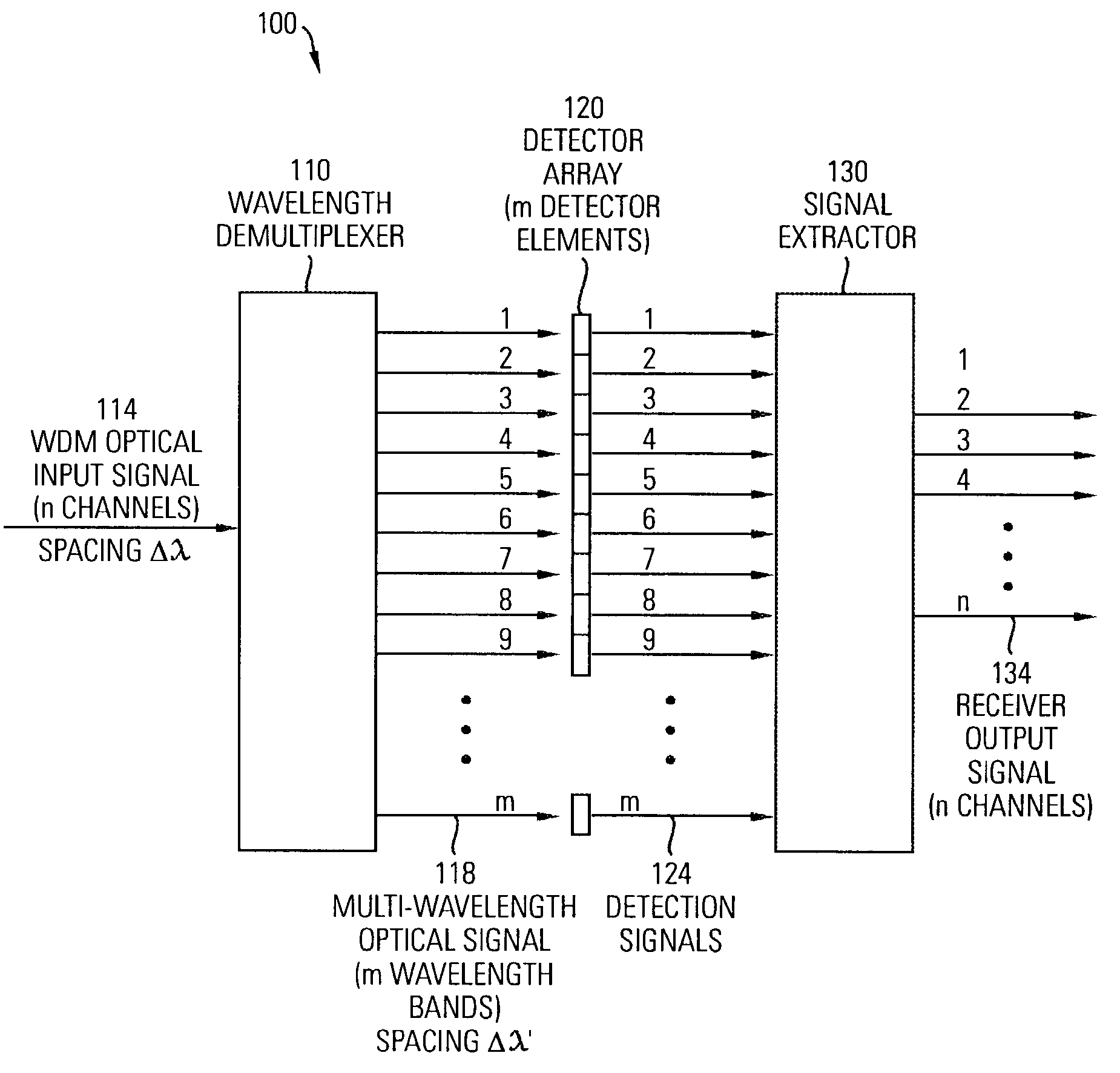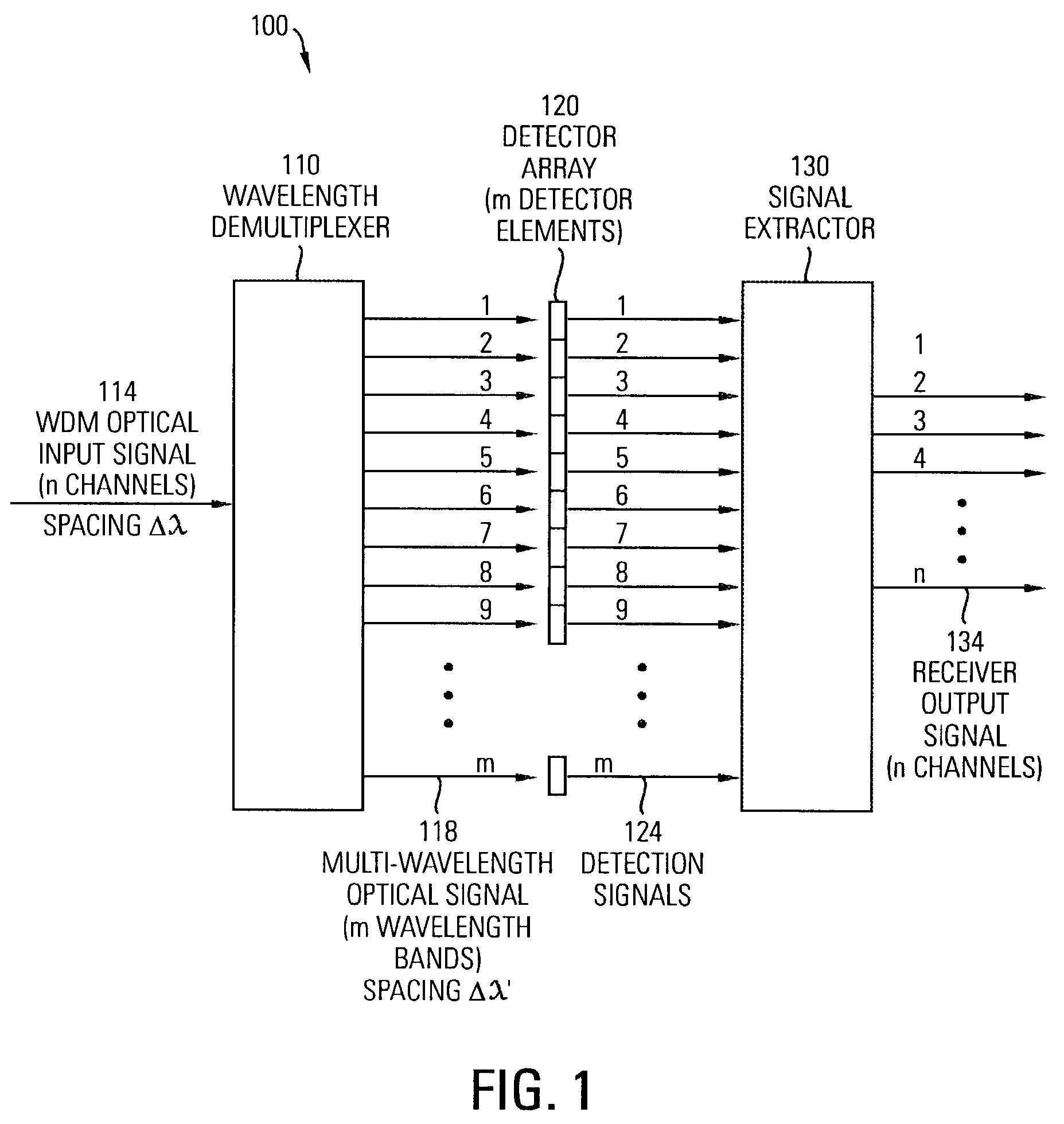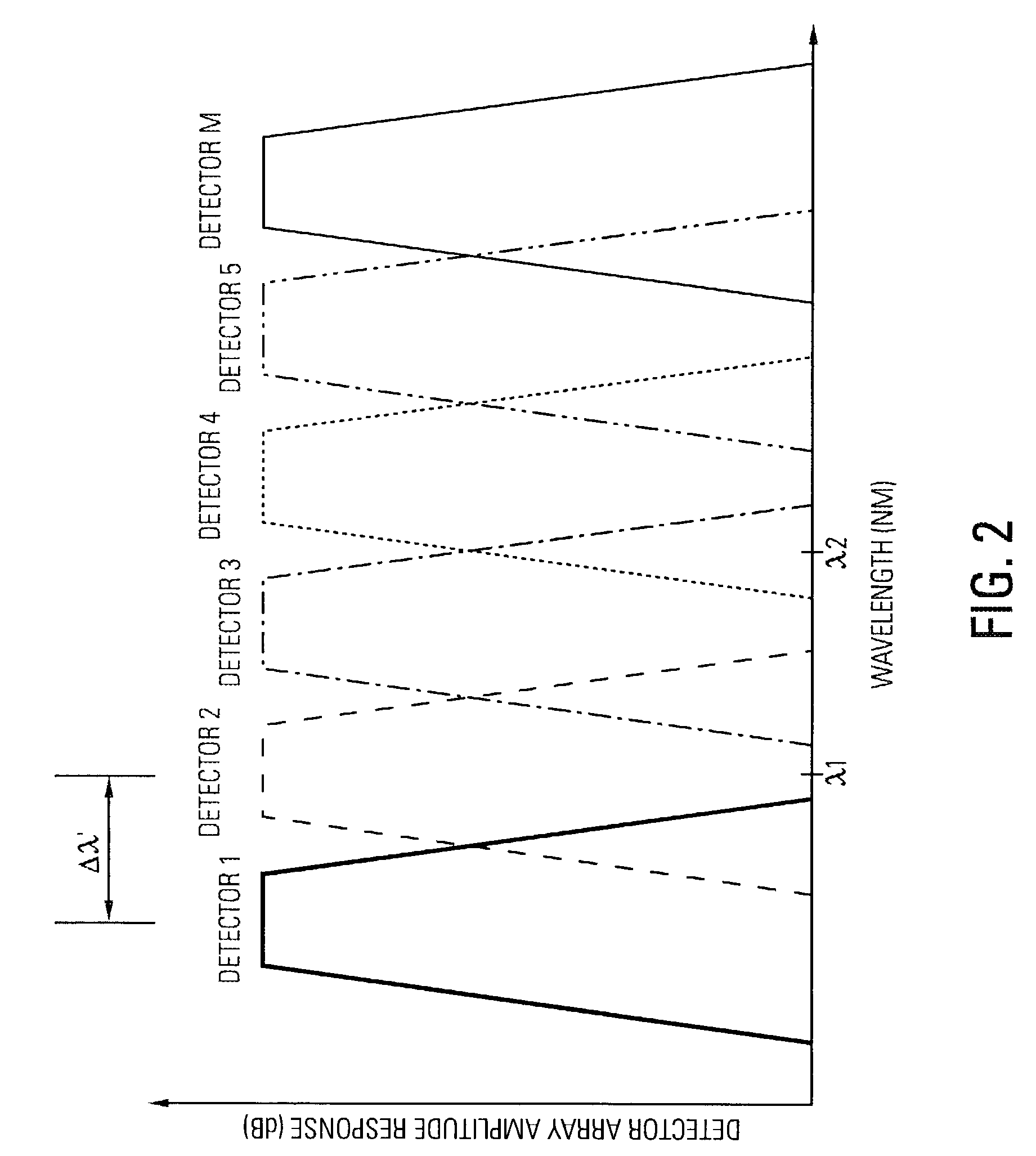Wavelength division multiplexing receiver for wavelength tracking
a wavelength tracking and wavelength division technology, applied in the field of wavelength tracking receivers, can solve the problems of increasing the complexity of the transmitter, and limiting the number of channels that can be supported by the wdm system
- Summary
- Abstract
- Description
- Claims
- Application Information
AI Technical Summary
Benefits of technology
Problems solved by technology
Method used
Image
Examples
first embodiment
[0022]WDM Receiver
[0023]FIG. 1 is a block diagram illustrating a first embodiment 100 of a wavelength division multiplexing (WDM) receiver 100 according to the invention. The WDM receiver 100 includes a wavelength demultiplexer 110 for receiving WDM optical input signal 114. The wavelength demultiplexer 110 generates a multi-wavelength optical signal 118 from the WDM optical input signal.
[0024]The WDM optical input signal 114 is an n-channel optical signal. Each channel has a center wavelength and adjacent channels are separated in wavelength by a channel spacing of delta lambda (Δλ). Optical signals having mutually different wavelengths are assigned to the channels of the WDM optical input signal. There is no requirement or implication that, at a given time, an optical signal be present in every channel of the WDM optical input signal. Moreover, the wavelengths of one or more of the optical signals may be offset from the center wavelengths of the channels to which the optical signa...
second embodiment
[0044]WDM Receiver
[0045]FIG. 5 is a block diagram illustrating a second embodiment 300 of a WDM receiver according to the invention. The WDM receiver 300 includes a splitter 304 for receiving WDM optical input signal 314 and for splitting the WDM optical input signal into two optical input signal components of substantially equal amplitude, e.g., a first optical signal component and a second optical signal component. The WDM optical input signal is an n-channel optical signal with a channel spacing of delta lambda (Δλ), as described above.
[0046]The WDM receiver 300 also includes a first wavelength demultiplexer 310 that is coupled to the splitter 304 to receive one of the optical input signal components, e.g., the first optical signal component. The first wavelength demultiplexer generates a first multi-wavelength optical signal 318 in response to the first optical signal component.
[0047]The first multi-wavelength optical signal 118 is an optical signal composed of a number m of wav...
PUM
 Login to view more
Login to view more Abstract
Description
Claims
Application Information
 Login to view more
Login to view more - R&D Engineer
- R&D Manager
- IP Professional
- Industry Leading Data Capabilities
- Powerful AI technology
- Patent DNA Extraction
Browse by: Latest US Patents, China's latest patents, Technical Efficacy Thesaurus, Application Domain, Technology Topic.
© 2024 PatSnap. All rights reserved.Legal|Privacy policy|Modern Slavery Act Transparency Statement|Sitemap



